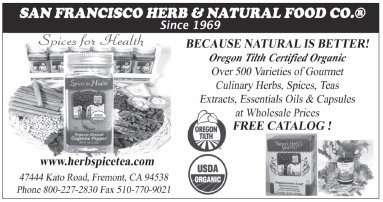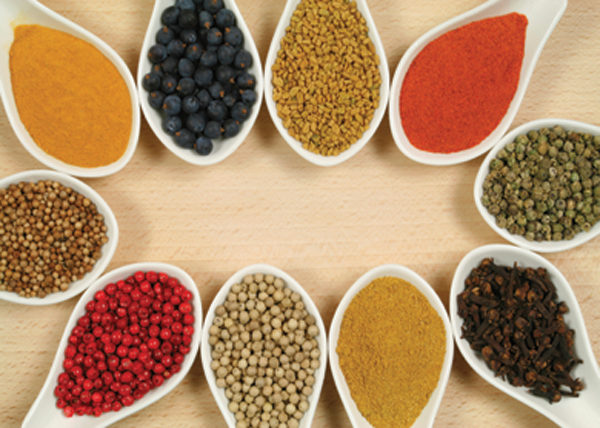Every flavor and color chemist is hard at work on products that will please our palettes and our eyes, respectively. What have those working in naturally derived food additives been up to most recently?
The Flavor Challenge
On a recent episode of the CBS news program 60 Minutes, the flavor innovation industry was brought into the limelight (1). The report questioned the consequences on public health with ever more desirable, intoxicating flavors making their way into everyday foods. These flavor advancements, which create a craving not unlike addiction, were investigated as a contributing factor in the obesity epidemic along with other public health problems.
But, having moved past the question of overconsumption, flavorist Jim Hassel, of flavor and fragrance giant Givaudan, addressed the trend toward improving the quality of consumer diets. The movement away from sugar, fat and salt excesses in food has left a hole that the flavor industry can fill. “Everyone, everyone, everyone is working on health and wellness. How can you get a consumable, acceptable product that’s better for you? And the challenge now is, how do you make ‘em taste good?” Hassel asked of reporter Morley Safer. “When you lower the salt, what can we put in that will make it taste like it did without salt? When you lower sugar, how can you make it taste sweeter without adding calories? So it’s a whole new world, that didn’t even exist 10 years ago.”
This whole new world has seen a lot of progress since the decade began. There was, on the health and wellness side of things, the introduction of flavors and flavor enhancers meant to compensate for sodium reduction in food products. One example is a product launched at October’s SupplySide West in Las Vegas (Salty-R from Horphag Research Nutrition), which is said to enhance the flavor of the salt present in a product, thereby allowing for a 25–35% reduction in salt content without downgrading the taste. The company reports that greater reductions in salt content have  been achieved when the product is used in combination with potassium chloride (KCl), and that in this context, the product can mask the off-taste notes in KCl. Meanwhile, umami flavors (think savory) remain all the rage, particularly as manufacturers navigate away from sodium, and as the taste foundation it provides needs to be replaced with something just as enticing.
been achieved when the product is used in combination with potassium chloride (KCl), and that in this context, the product can mask the off-taste notes in KCl. Meanwhile, umami flavors (think savory) remain all the rage, particularly as manufacturers navigate away from sodium, and as the taste foundation it provides needs to be replaced with something just as enticing.
There is also a need for the talents of the flavor industry due to the volatility of the food commodities market. Rising prices for indispensable food ingredients, such as sugar and dairy products, are leading to innovation from flavor companies. They are being called upon to restore the taste and texture that are lacking, as manufacturers cut costs by reformulating products to include less of these expensive commodities. Comax Flavors, for example, recently promoted its peanut and pecan flavors in the context of production shortages in China and rising costs.
Some hot product categories promise to increase natural flavor innovation as they branch out toward success. As energy drinks and bars seek to carve out a niche with natural food consumers, memorable flavors will be required to make any one of these products more than a one-time purchase. Look for superfruit flavors like mango and blueberry to inject themselves into interesting places where they wouldn’t have worked in the past.
Regulatory momentum also seems to be in swing for many segments of the flavor industry. Generally recognized as safe (GRAS) notification from the U.S. Food and Drug Administration (FDA) is an important step for any entry into the food and nutrition market today. A pipeline of FDA non-objection letters seems to be open for innovative new flavors; take for example the recently announced GRAS status of two new savory flavors, which are said to closely mimic MSG (monosodium glutamate) in food applications (2).
There have also been scientific developments that could affect flavor applications across the board. One study, published in LWT - Food Science and Technology, investigated the potential of starch complexes to encapsulate flavor compounds, allowing for the release of aromas in the oral cavity as food is chewed (3). The menthol and menthone compounds studied were thought to be activated by salivary fluids, with a boost in flavor occurring due to the presence of amylose in the starch. These starch complexes were also found to be pH, storage and temperature stable.
True Colors
Visually oriented innovators have been busy trying to expand the color wheel when it comes to food. Often, this has meant branching out from previous achievements. “What we’ve seen in the past year for innovation has been new variations on ‘old’ themes,” says Chad Ford, product manager of colors and specialty ingredients for WILD Flavors, Erlanger, KY. His firm’s recent achievement, an acid-stable blue colorant, has now grown to include additional forms beyond a standard fruit juice blend. The color is now available, Ford says, in powdered, dispersion and oil-soluble emulsion forms. Apart from these new forms, new hues have been developed utilizing this stable blue color as a base.
Speaking about color developments in general, Ford says, “Attractive natural shades of green and purple that were previously unattainable can now be used to color most food and beverage products.” He adds that even formerly elusive hues such as black and brown can now be achieved consistently in food. Stability remains a challenge, but more barriers are broken down each year in this regard, and natural colors are gaining ground on their artificial counterparts in terms of versatility.
Other advancements have involved turning up the brightness quotient on certain colors. “LycoRed’s key technical innovation to deliver lycopene as a natural red food color during the last year has been to increase the color intensity of its ready-to-use formulations whilst retaining the stability and functionality across the range of foods and beverages it can be applied to,” says Andrew Kendrick, Ph.D., international technical development manager of LycoRed, Orange, NJ.
Kendrick’s firm has introduced formulas of its lycopene-based red that deliver the same desired color with less colorant required in the final product, reducing costs for manufacturers. “This, in combination with its enhanced stability to vitamin C, pH (compared to anthocyanins) and heat (compared to beetroot) and consumer acceptance as a source of natural color (compared to carmine),” he says. Health is increasingly a factor as manufacturers choose their colorants. Many proprietary colors now boast of delivering nutrients such as antioxidants and vitamins, along with their visual flair.
What of the more intriguing, even outlandish color offerings that have entered the food market: iridescence, color shifting, et al.? Are they just for fun, or do they represent a bigger trend toward helping one’s products stand out on crowded grocery shelves? “Attention-grabbing trends tend to be just that. They are novel for a period of time, and then the novelty wears off. As with almost all food and beverage products, unless there is a great taste behind it, consumers won’t return for additional purchases,” says Ford. WF
References
1. “The Flavorists: Tweaking tastes and creating cravings,” 60 Minutes, Nov. 27, 2011, http://www.cbsnews.com/8301-18560_162-57330816/the-flavorists-tweaking-tastes-and-creating-cravings/?tag=contentMain;contentBody, accessed Nov. 30, 2011.
2. “Senomyx Announces Corporate Update and Third Quarter 2011 Financial Results,” Senomyx, Oct. 27, 2011, http://news-media.senomyx.com/news_102711.html, accessed Nov. 30, 2011.
3. H. Ades, et al., “Complexation with starch for encapsulation and controlled release of menthone and menthol,” LWT - Food Science and Technology 45(2), 277-288 (2012).
Published in WholeFoods Magazine, January 2012









